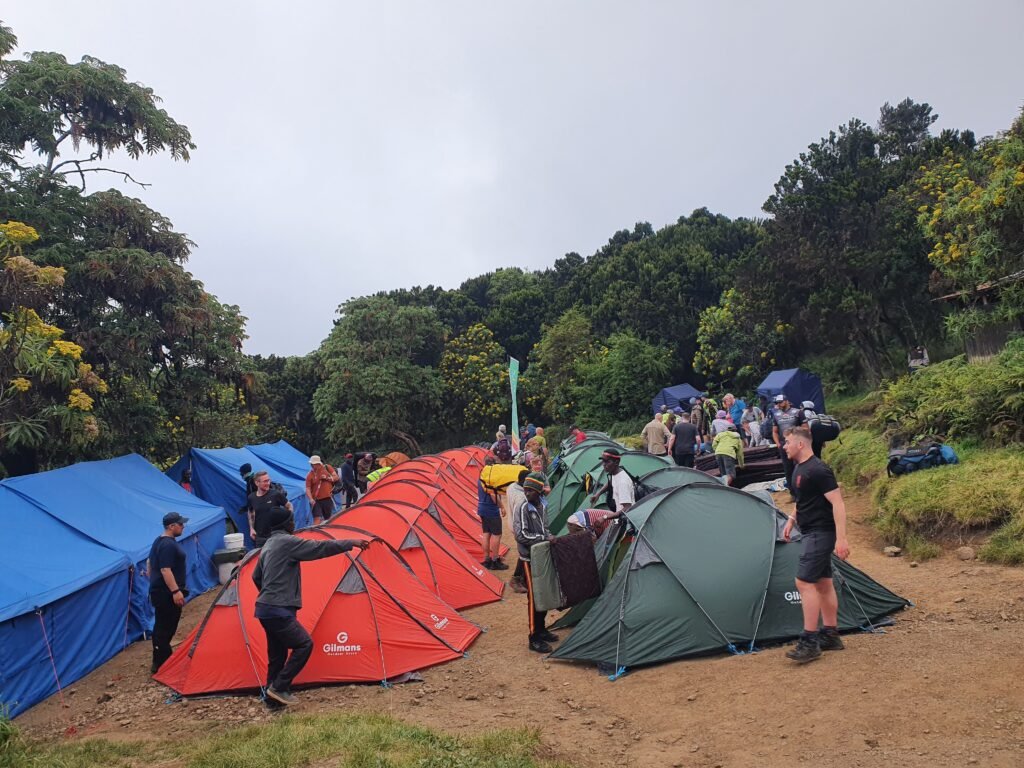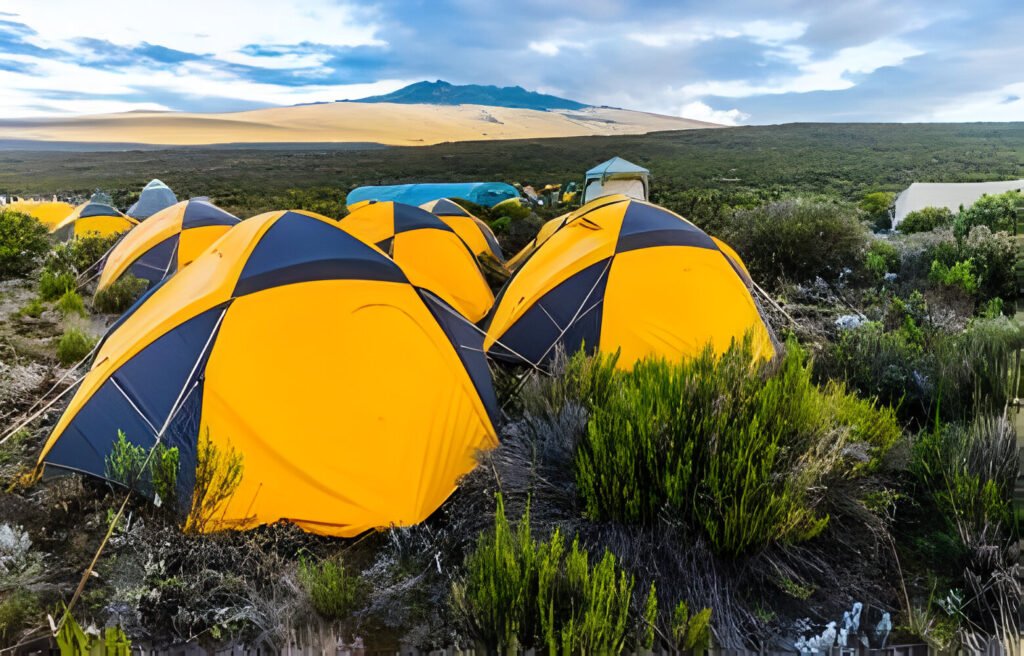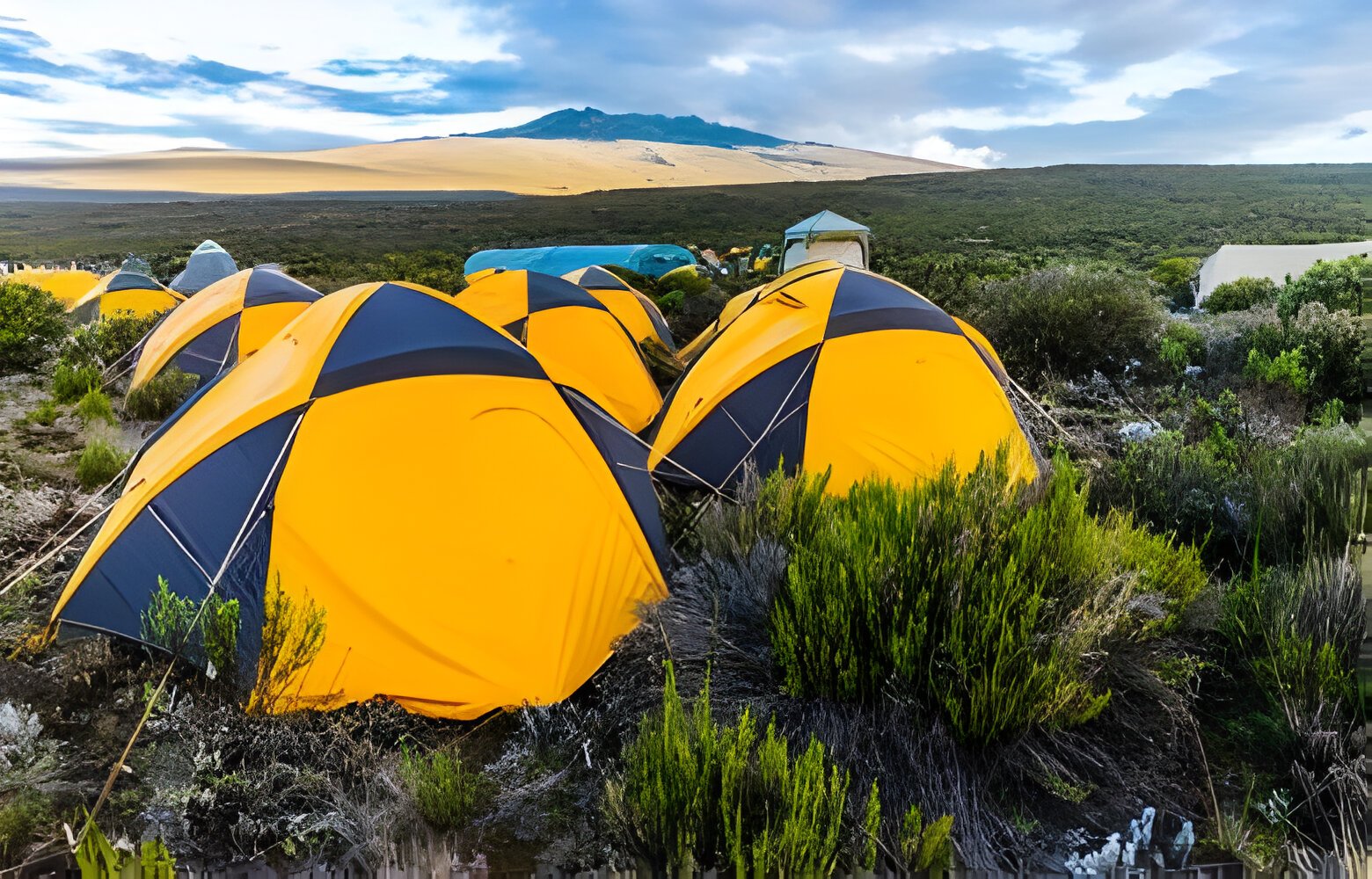The best Kilimanjaro’s Trekking Lemosho in Seven (7)-Days 2025-2026
The best Kilimanjaro’s Trekking Lemosho in Seven (7)-Days 2025-2026 : The Lemosho Route on Mount Kilimanjaro is widely recognized as one of the most scenic and less crowded trails to the summit, offering an exceptional trekking experience. Starting on the western side of the mountain, this route provides climbers with a chance to experience lush rainforests, moorlands, and breathtaking views of the Shira Plateau. With ample time for acclimatization, it is one of the longest routes but offers a higher summit success rate.

The Lemosho Route traverses diverse ecosystems, from rainforest to alpine desert and, eventually, glacier fields near the summit. Climbers often spot wildlife at lower elevations, such as buffalo, colobus monkeys, and bushbucks in the forests. As you climb, you’ll experience stunning panoramic views, especially of Mount Meru and Kilimanjaro’s three volcanic cones: Shira, Mawenzi, and Kibo.
This trail generally spans 6-8 days, allowing for increased acclimatization compared to shorter routes. Passing through Shira Camp, Barranco Valley, and the famous Lava Tower for acclimatization hikes, trekkers gradually prepare for the high-altitude challenges. The summit approach is typically from Barafu Camp, allowing trekkers to reach Uhuru Peak in the early morning, just in time for a spectacular sunrise over Africa.
Guides on this route are well-trained in altitude sickness management, making it a safer option for climbers of all experience levels. Additionally, porters provide support, carrying gear and essentials, and helping to set up comfortable camping sites at each stop. The high success rate of the Lemosho Route is attributed to the gradual ascent profile and the added time for altitude adaptation.
From lush landscapes to rugged terrain, the Lemosho Route provides an unforgettable journey. It’s highly recommended for adventurous trekkers who wish to combine a challenging hike with the beauty of Kilimanjaro’s ecosystems while maximizing their chances of a successful summit.
The best Kilimanjaro’s Trekking Lemosho in Seven (7)-Days 2025-2026 is often regarded as one of the most scenic and enjoyable ways to summit Africa’s highest peak. The seven-day trek on this route offers great acclimatization due to its gradual ascent profile, allowing climbers a higher chance of success at reaching Uhuru Peak.

The best Kilimanjaro’s Trekking Lemosho in Seven (7)-Days 2025-2026 Day by day itinerary
Day 1: Londorossi Gate to Mti Mkubwa Camp
Elevation: 2,100m (6,890 ft) to 2,780m (9,120 ft)
Distance: 6 km (3.7 miles)
Hiking Time: 3-4 hours
Habitat: Rainforest
Description: After check-in and registration at Londorossi Gate, the trek begins in dense rainforest with chances to see wildlife, including colobus monkeys. The path is lush and provides plenty of shade before reaching Mti Mkubwa Camp for the first night.
Day 2: Mti Mkubwa Camp to Shira 1 Camp
Elevation: 2,780m (9,120 ft) to 3,500m (11,485 ft)
Distance: 8 km (5 miles)
Hiking Time: 5-6 hours
Habitat: Moorland
Description: Leaving the forest, you’ll enter the moorland zone, with views opening up across the Shira Plateau. You will gradually gain elevation as you cross the plateau, ending the day at Shira 1 Camp with expansive views of the mountain and Shira Ridge.
Day 3: Shira 1 Camp to Shira 2 Camp
Elevation: 3,500m (11,485 ft) to 3,850m (12,630 ft)
Distance: 7 km (4.3 miles)
Hiking Time: 3-4 hours
Habitat: Moorland
Description: This is a shorter day, which helps with acclimatization. The route crosses the Shira Plateau, with opportunities to explore volcanic rocks and take in panoramic views. Overnight at Shira 2 Camp.
Day 4: Shira 2 Camp to Lava Tower to Barranco Camp
Elevation: 3,850m (12,630 ft) to 4,630m (15,190 ft) to 3,976m (13,044 ft)
Distance: 10 km (6.2 miles)
Hiking Time: 7-8 hours
Habitat: Alpine Desert
Description: This day is key for acclimatization, as you’ll ascend to the Lava Tower before descending to Barranco Camp. After lunch at Lava Tower, you’ll descend through scenic valleys. The night at Barranco Camp includes impressive views of the Barranco Wall and the surrounding landscape.
Day 5: Barranco Camp to Karanga Camp
Elevation: 3,976m (13,044 ft) to 3,995m (13,106 ft)
Distance: 5 km (3.1 miles)
Hiking Time: 4-5 hours
Habitat: Alpine Desert
Description: Begin the day by tackling the Barranco Wall, a challenging but exhilarating climb. Afterward, you’ll traverse ridges and valleys before reaching Karanga Camp. This shorter day allows additional acclimatization.
Day 6: Karanga Camp to Barafu Camp
Elevation: 3,995m (13,106 ft) to 4,673m (15,331 ft)
Distance: 4 km (2.5 miles)
Hiking Time: 3-4 hours
Habitat: Alpine Desert
Description: A shorter trek to Barafu Camp, the base camp for your summit push. After an early dinner, you’ll rest in preparation for the early morning ascent to Uhuru Peak.
Day 7: Barafu Camp to Uhuru Peak to Mweka Camp
Elevation: 4,673m (15,331 ft) to 5,895m (19,341 ft) to 3,068m (10,065 ft)
Distance: 17 km (10.6 miles)
Hiking Time: 10-14 hours
Habitat: Arctic to Rainforest
Description: Summit day begins around midnight. Climbing through the night, you’ll reach Stella Point at sunrise, then make the final push to Uhuru Peak, the highest point in Africa. After a short celebration at the summit, you’ll descend back to Barafu for rest before continuing to Mweka Camp for the night.
Day 8: Mweka Camp to Mweka Gate
Elevation: 3,068m (10,065 ft) to 1,640m (5,380 ft)
Distance: 10 km (6.2 miles)
Hiking Time: 3-4 hours
Habitat: Rainforest
Description: Your final day is a descent through lush rainforest, where you’ll enjoy the last views of Kilimanjaro’s landscapes. At Mweka Gate, you’ll receive your completion certificate before heading back to Moshi or Arusha.
Additional Tips for the Lemosho Route:
Best Time: The most favorable seasons for climbing are January to March and June to October.
Acclimatization: This itinerary includes gradual ascents, aiding acclimatization, but remember to hydrate, rest, and go at a comfortable pace.
Gear: Ensure you have quality, layered clothing for varied climates, sturdy hiking boots, and essential summit gear.
Includes:
Kilimanjaro trekking according to the itinerary
Professional, English-speaking Wilderness First Responder & CPR certified Guide
Proper Ration of Mountain crew (Cook & Porters)
Pre and Post accommodations (2 nights Bed and Breakfast)
Airport Transfers
Meals according to the itinerary
Drinking water and Full Board Meals
All National Park & Hut Fees, Crew Permits and VAT
Fair and Sustainable Salary Crew Wages
Gate Transfers
Complimentary Oxygen Cylinder
Quality Imported Equipments
Excludes:
Flights
Visa fees
Travel or Medical Insurance is required and you should ask for Recommendation
Gamow Bag
Medication
Tips for porters and mountain crew (20% Industry Standard Recommended)
Personal spending money for souvenirs etc.
Energy food & beverages, alcoholic and soft drinks
Personal hire gear such as trekking poles, sleeping bags, etc.
Additional lodge nights if early descent from the mountain $150 per room

